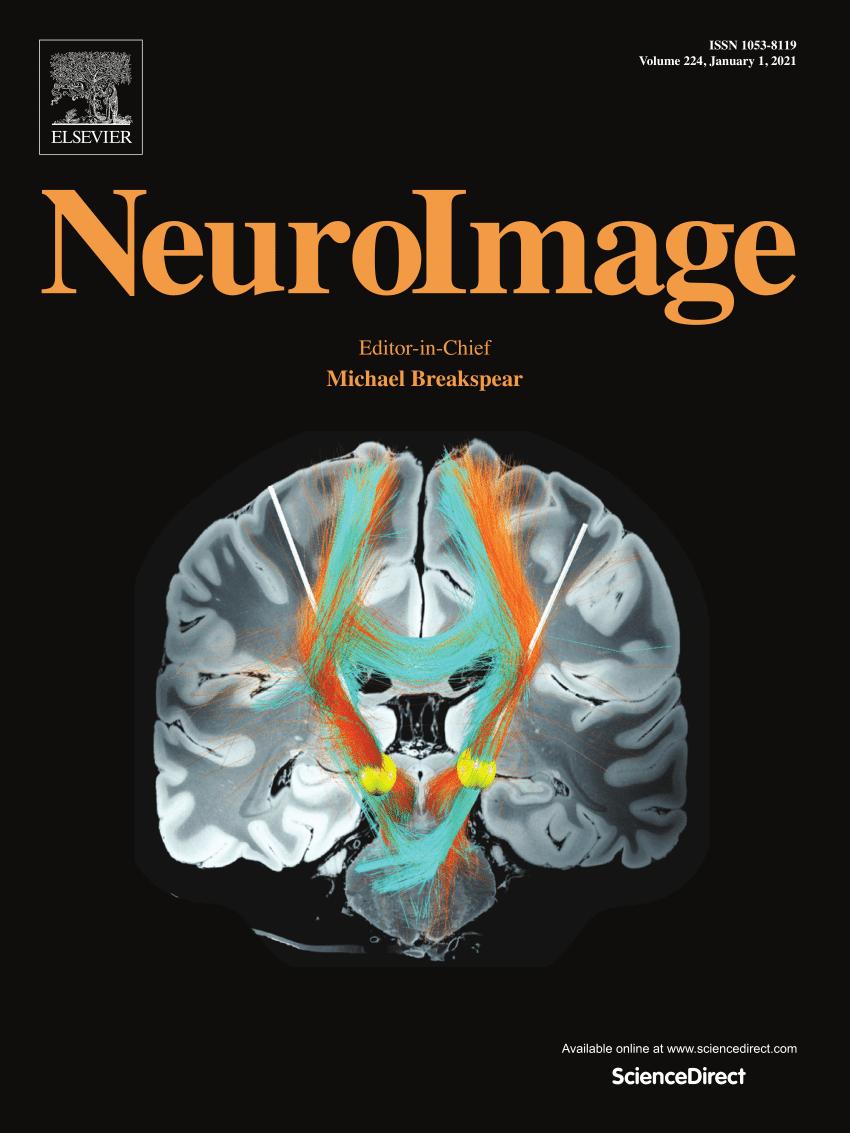Spatiotemporal dynamics of reading Kana (syllabograms) and Kanji (morphograms)
IF 4.5
2区 医学
Q1 NEUROIMAGING
引用次数: 0
Abstract
Reading engages complex neural networks integrating visual, phonological, and semantic information. The dual-stream model posits ventral and dorsal pathways for lexical and sublexical processing in the left hemisphere and is well-supported in alphabetic languages. However, its applicability to non-alphabetic scripts remains unclear. The Japanese writing system, comprising Kana (syllabograms) and Kanji (morphograms) with distinct orthographic, phonological, and semantic properties, provides a unique framework to investigate neural dissociation between phonological and orthographic-semantic processing. Previous studies suggest that Kanji relies on the ventral route for whole-word recognition and semantic processing, whereas Kana depends mainly on the dorsal route for phonological decoding via grapheme-to-phoneme conversion; however, their spatiotemporal dynamics remain unknown. Using high-gamma power analysis from electrocorticography recordings in 14 patients with epilepsy and subdural implants, we examined the spatiotemporal neural dynamics of Kana and Kanji reading. Participants completed a visual lexical decision task with Kana and Kanji words and pseudowords. Across 912 electrodes, differential high-gamma power analysis showed that Kanji activated bilateral occipitotemporal fusiform regions early (120–550 ms) and the left inferior temporal gyrus (150–240 ms). Conversely, Kana showed prolonged late activation (270–750 ms) in the left-lateralised superior temporal, supramarginal, and inferior frontal gyri, especially during pseudoword processing. These findings indicate that Kanji relies on bilateral ventral stream earlier, while Kana depends on the left dorsal stream, with slower processing reflecting the extra grapheme-to-phoneme conversion. This underscores the value of non-alphabetic languages in elucidating both universal and script-specific neural mechanisms, advancing a cross-linguistic understanding of the reading network.

假名(音节)和汉字(形态)阅读的时空动态。
阅读涉及复杂的神经网络,整合视觉、语音和语义信息。双流模型假设左半球词汇和亚词汇处理的腹侧和背侧通路,并且在字母语言中得到很好的支持。然而,它对非字母文字的适用性仍不清楚。日语书写系统由假名(音节)和汉字(形态)组成,它们具有不同的正字法、语音和语义特性,为研究语音和正字法语义处理之间的神经分离提供了一个独特的框架。以往的研究表明,汉字的全词识别和语义处理依赖于腹侧通路,而假名主要依赖于背侧通路,通过字-音素转换进行语音解码;然而,它们的时空动态仍然是未知的。通过对14例脑膜下植入的癫痫患者的脑电图记录进行高伽马功率分析,研究了假名和汉字阅读的时空神经动力学。参与者完成了假名、汉字和假词的视觉词汇决策任务。在912个电极上,差异高伽马功率分析显示,汉字激活了双侧枕颞梭状区(120-550 ms)和左侧颞下回(150-240 ms)。相反,假名在左外侧颞上、边缘上和额下回中表现出延长的晚期激活(270-750毫秒),特别是在假字处理过程中。这些发现表明,汉字更早地依赖于双侧腹侧流,而假名依赖于左背侧流,处理速度较慢,反映了额外的字形到音素转换。这强调了非字母语言在阐明通用和特定文字的神经机制方面的价值,促进了对阅读网络的跨语言理解。
本文章由计算机程序翻译,如有差异,请以英文原文为准。
求助全文
约1分钟内获得全文
求助全文
来源期刊

NeuroImage
医学-核医学
CiteScore
11.30
自引率
10.50%
发文量
809
审稿时长
63 days
期刊介绍:
NeuroImage, a Journal of Brain Function provides a vehicle for communicating important advances in acquiring, analyzing, and modelling neuroimaging data and in applying these techniques to the study of structure-function and brain-behavior relationships. Though the emphasis is on the macroscopic level of human brain organization, meso-and microscopic neuroimaging across all species will be considered if informative for understanding the aforementioned relationships.
 求助内容:
求助内容: 应助结果提醒方式:
应助结果提醒方式:


